Orbital “cities in space” built from asteroid or lunar materials.
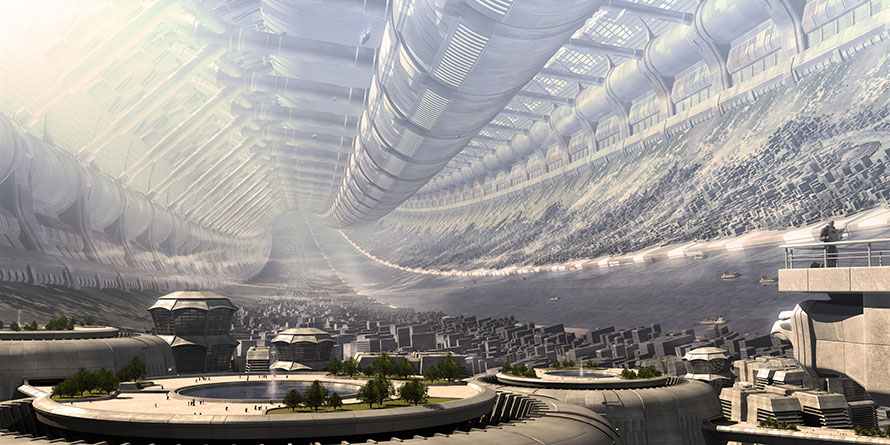 Image: Alexander Preuss
Image: Alexander Preuss
DESCRIPTION
Orbital space settlements are large pressurized structures that constitute cities or villages with residential, commercial and/or governmental functions, built in space from asteroid or lunar materials, where families live. The settlements would rotate to provide artificial gravity.
In 1974, Princeton physicist Gerard O’Neill proposed the construction of orbital space settlements. An orbital settlement (sometimes called an “O’Neill Settlement”) is a giant rotating space structure, large enough and rotating fast enough so that people standing on the inner surface would experience a centrifugal force equivalent to gravity on the surface of the Earth. Thus, children on orbital space settlements would be raised in Earth-normal gravity, which is important for normal bone and muscle development. Three proposed types of orbital settlements are Bernal Spheres (and a variation called Kalpana), Stanford Tori and O’Neill Cylinders.
Shapes
Since orbital space settlements must rotate, only a few basic shapes work well: sphere, torus, cylinder, disk, or some combination. Current materials are strong enough for habitats many kilometers in extent, big enough for a moderately large city. The inner surface of the hull is real estate, i.e., land on which crops could be grown and homes and businesses could be constructed. While the outer hull will experience one gravity, interior structures can be positioned for fractional gravity, and even zero gravity at the axis of rotation. People and their families can live there indefinitely, in communities ranging in size from villages to cities which have their own internal economies as well as external imports and exports.
Radiation Shielding
The Equatorial Low Earth Orbit (ELEO) settlements discussed in Milestone 16, which can act as precursors for later orbital settlements, use the Earth’s geomagnetic field to shield them from space radiation. All other settlements would need to use extensive radiation shielding.
Unlike Lunar or Martian surface settlements, radiation shielding is required on all sides, so roughly twice as much shielding mass is necessary. Shielding can consist of a substantial mass of asteroidal rubble, water, waste material, or some other mass.
Location Options
Orbital settlements could be built in, or moved to, a variety of orbits, including Earth, solar or other orbits, including special locations such as Lagrange points. Most of these orbits would be selected to have continuous solar energy available. The choice of orbit may be driven by access to materials, such as sites co-orbiting near an asteroid mine. For use in cislunar space, lunar material could be launched into space using electromagnetic launchers (mass drivers). Material mined from an asteroid could be utilized either in an orbit close to the asteroid or moved to some other desired location. There are thousands of candidate asteroids among the Near Earth Objects, some requiring less energy to reach than the Moon.
Eventually such cities in space could be located throughout the solar system, orbiting around planets or moons, co-orbiting with asteroids, at Lagrange points, or in solar orbit. These settlements may be very different from each other, each reflecting the particular tastes and cultures of those who built, financed and settled it. Such diversity could provide a new flowering of human creativity. The result would also be to disperse humankind throughout the solar system, enabling survival even if some disaster were to befall the Earth.
Economic Considerations
Orbital settlements may be built by private companies, governments, or consortiums. It will be financially possible to build them only when the cost of construction and support is less than the expected value of the settlement, financial or otherwise.
The Potential Scale of Orbital Settlement
Orbital settlements could be built in virtually unlimited numbers. NASA Publication SP-413 (Space Settlements: A Design Study) states: “If the asteroids are ultimately used as the material resource for the building of new colonies, and … assuming 13 km of total area per person, it appears that space habitats might be constructed that would provide new lands with a total area some 3,000 times that of the Earth.”
COMPONENTS (required capacities)
Habitats in space beyond Low Earth Orbit designed as space settlements must be able to:
- Provide redundant life support systems for the residents that will last for many decades.
- Store sufficient reserves of food and water for the residents, recycle water and grow food.
- Provide a high level of protection and redundancy against loss of air pressure accidents.
- Protect residents against constant cosmic radiation (heavy, fast nuclei from outside the solar system) to a level consistent with the presence of children and pregnant women.
- Protect against intermittent radiation from solar mass ejections and general solar radiation to a level consistent with the presence of families and children.
- Provide artificial (centrifugal) gravity with a sufficient level of gravity to maintain health.
- Provide for permanent residency by making the habitats suitable (large enough, etc,) for comfortable living.
- Provide employment and recreation for the residents.
BARRIERS
- Lack of asteroidal or lunar-derived materials and parts in space for construction of orbital settlements.
- Lack of detailed planning, design and methods for creation of orbital space settlements, including use of materials to build large, pressurized, rotating structures in space.
- Lack of immediate economic incentive to work toward orbital settlement construction.
- Inadequate understanding of human physical adaptation and the psychology of individuals and large groups of people living in space.
- Lack of information on all phases of the cost to construct orbital space settlements.
- Planetary chauvinism: the idea that people should only live on planetary surfaces.
COMPLETION
This milestone can be considered achieved when a rotating space settlement built primarily from non-terrestrial materials has a population of at least 1000 including families and children. Another milestone will be achieved when the total population in orbital space settlements exceeds the population on Earth.
ORBITAL SPACE SETTLEMENT DESIGNS (click for larger image)
Kalpana One:
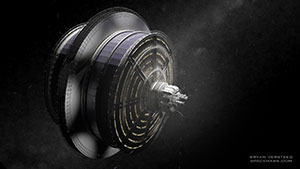
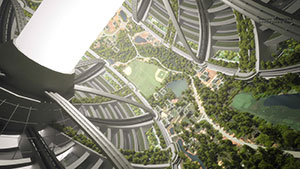
Diameter: 1/3 mile – Population: 3,000
(Bryan Versteeg, spacehabs.com)
Bernal Sphere:
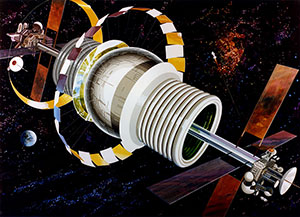
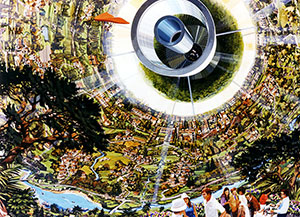
Diameter: 1/3 mile – Population: 10,000
(Rick Guidice, NASA)
Stanford Torus:
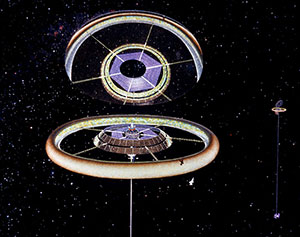
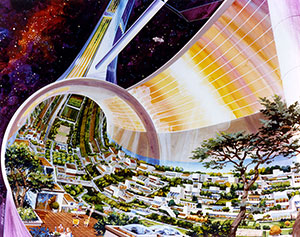
Diameter: 1 mile – Population: 10,000
(Don Davis, Rick Guidice, NASA)
O’Neill Cylinder:
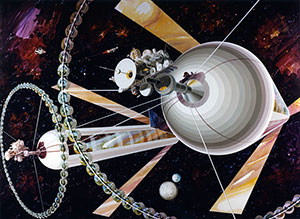
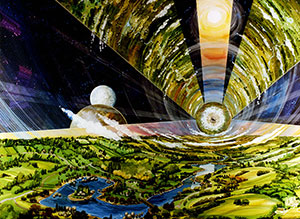
Diameter: 4 miles – Population: over a million
(Rick Guidice, NASA)
MORE OF THE NSS ROADMAP TO SPACE SETTLEMENT:






